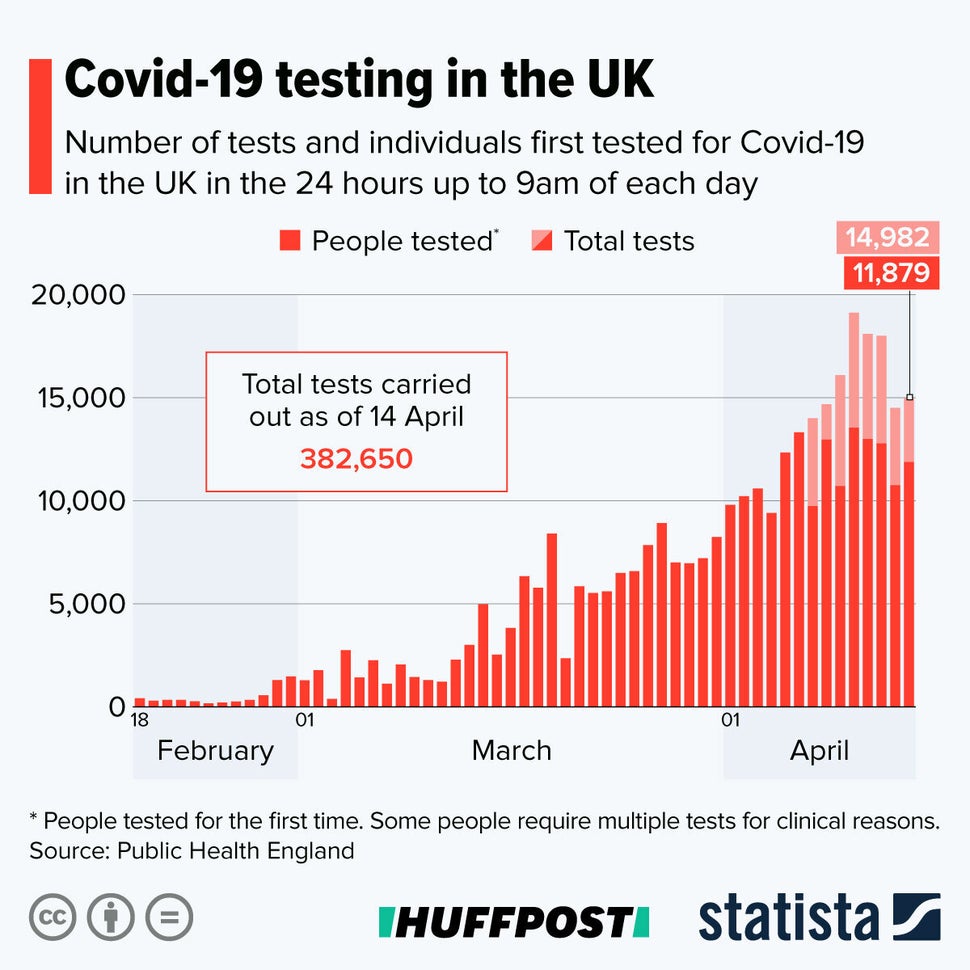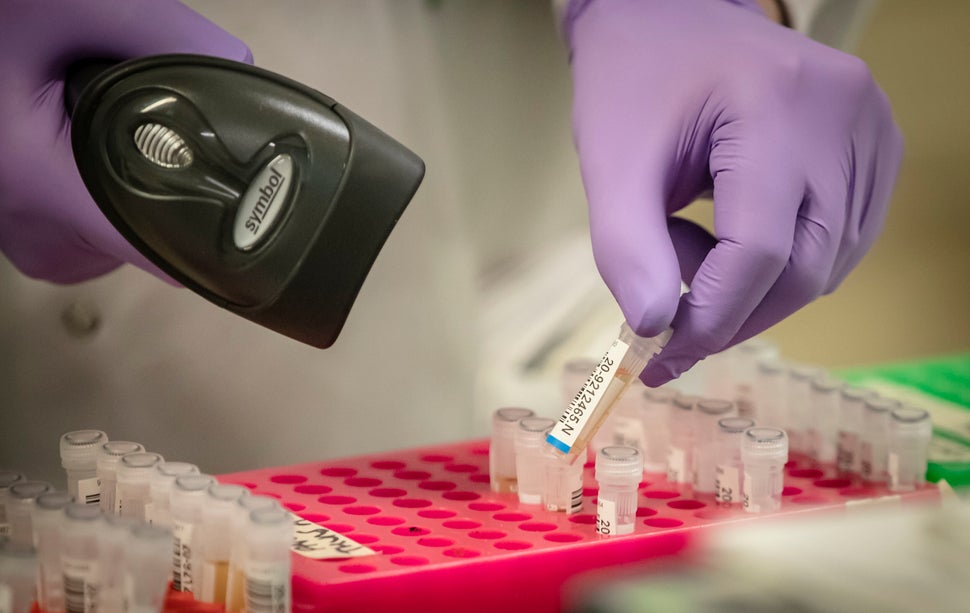Get the latest on coronavirus. Sign up to the Daily Brief for news, explainers, how-tos, opinion and more
At the start of April the government made it clear that testing would be a key weapon in the country’s arsenal against coronavirus.
Testing would help restore some of the uncertainty stolen by the virus, health secretary Matt Hancock reassured Britons in a statement. “It’s a big part of how we’re going to defeat this disease,” he wrote.
As such, Hancock set the challenge for the UK to carry out 100,000 Covid-19 tests a day by the end of April.
But with just over two weeks to go until the deadline, the country is less than a fifth of the way to completing this mission. Since the pledge on April 2, the government has added just a few thousand to its capacity: on Monday, a little over 15,000 people were tested.
Nonetheless, the government has insisted it’s “on track” to meet its target – so what does it expect to change over the next fortnight?
Here’s what you need to know.
What did the government actually promise?

When it comes to the government’s aims on coronavirus testing, it’s fair to say it has put out some mixed messages in recent weeks.
At different moments, ministers have variously said that the UK target was for 25,000, 100,000 and 250,000 Covid-19 tests a day.
But the main target the government has set for itself is for the UK to carry out 100,000 daily tests by the end of April.
In a statement on April 2, Hancock said this would be achieved by increasing testing across five key pillars:
- NHS swab testing for patients and critical key workers
- Commercial swab testing for critical key workers at testing sites across the UK
- Antibody tests to determine if people are immune to the virus
- Population surveillance testing – this involves Public Health England testing people’s blood to work out what percentage of the population has already had the virus
- British life sciences companies turning their resources to mass testing
“These five pillars represent a comprehensive strategy to put in place the testing that is mission-critical as we fight this battle against Covid-19,” Hancock said.
While it is not exactly clear how testing in each of these pillars will grow in order to reach the 100,000 mark, we do know that the government wants to scale up NHS swab testing (pillar one) from 10,000 tests a day to 25,000 by the end of April.
We also know that the government has had a serious issue finding reliable anti-body tests (pillar three). These tests determine whether someone has already had the virus by looking for signs of immunity.
Public Health England’s Professor John Newton told MPs on April 8 that the government did not expect to be doing antibody tests at all by the end of the month.
“We’re not relying on antibody tests to make up that target,” he said, according to the Guardian.
“We were optimistic that a number of companies have been offering us these quick antibody tests and we were hoping they would be fit for purpose. They all work to some extent, but are not good enough to rely on.”
How many tests is the UK carrying out at the moment?

According to the figures put out each day by the Department of Health and Social Care, the UK has some way to go to reach its 100,000 goal by the end of April.
In fact, with just two weeks left, the country has yet to hit even 20% of this capacity – and since the start of April, when capacity for 10,000 tests a day was reached, it has only added a few thousand to that total.
Across England, Scotland and Wales, 14,982 tests were carried out on Monday April 13. Northern Ireland’s public health agency said that it carried out tests on 462 people the same day – though if the UK’s figures are anything to go by, the actual number of tests could be a couple of hundred higher, as some people need testing more than once.
The total of well under 16,000 appears to contradict Boris Johnson’s official spokesperson, who told reporters on Easter Monday that the daily figure was higher than this, with 18,000 tests carried out in the 24 hours to Sunday morning.
Even if this higher figure is more accurate, the UK needs to increase its daily testing capacity by 80,000 in a matter of just weeks.
So, how does the government plan to make up the difference?

Despite the numbers, the government has insisted it is on track to meet its target in just over a fortnight – and has placed a lot of emphasis on the ability of its three “Lighthouse Labs” to increase testing capacity.
The hope is that each of these so-called “mega-labs” – in Milton Keynes, Glasgow and near Manchester – will be able to test thousands of patient samples a day.
The Milton Keynes laboratory, which the government said could already do so, opened its doors on April 9.
Meanwhile, Downing Street said on Tuesday that the Manchester lab was now in operation, carrying out 500 tests. The Glasgow site is expected to open at the end of the week.
Cambridge University, in collaboration with pharmaceutical giants AstraZeneca and GlaxoSmithKline, is also setting up its own testing facility, with an aim of testing 30,000 samples a day by the first week of May.
Across the UK, there are 19 test centres that have been set up by the government, as well as eight test centres run by NHS trusts.
A spokesperson for the Department of Health and Social Care told HuffPost UK testing was a “crucial part” of its response to coronavirus, adding: “We are committed to carrying out 100,000 tests a day by the end of April.”
They added: “We have doubled our testing capacity in hospitals, and every patient that has needed a test has had one.
“More than 27,000 frontline NHS staff and their family members have also been tested so far in England and Wales, but we want to go even further.
“We now have 27 testing sites for key workers and symptomatic members of their household in operation across the UK.”
There are about 1.5m NHS workers, including nearly 500,000 doctors, nurses and midwives. Many other staff groups, such as healthcare assistants and porters, also come into contact with patients, and it is likely staff will need regular tests rather than just one – at least, until they know they are immune to the virus.
Infographics provided by Statista.
Calling all HuffPost superfans!
Sign up for membership to become a founding member and help shape HuffPost’s next chapter
Credit: Source link